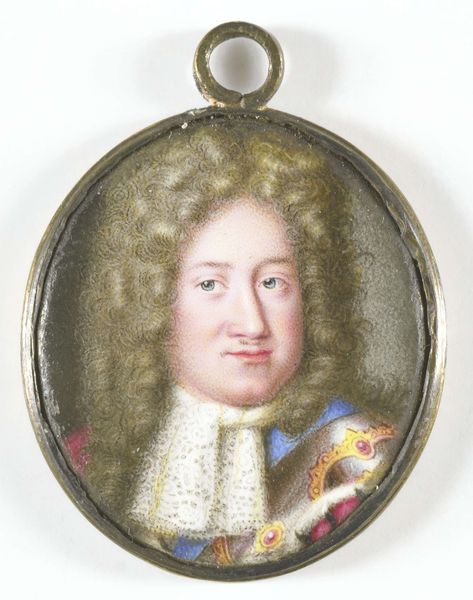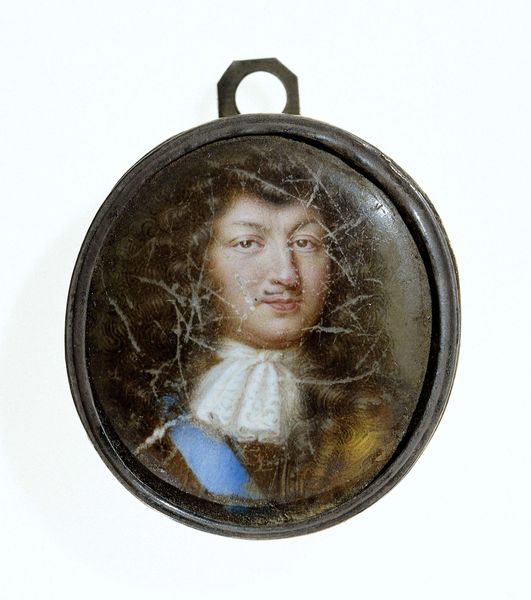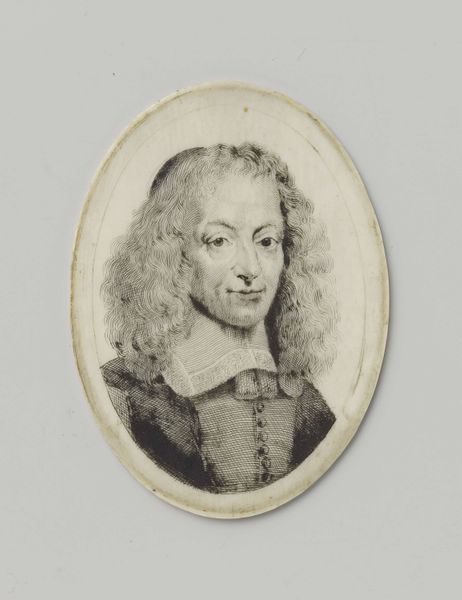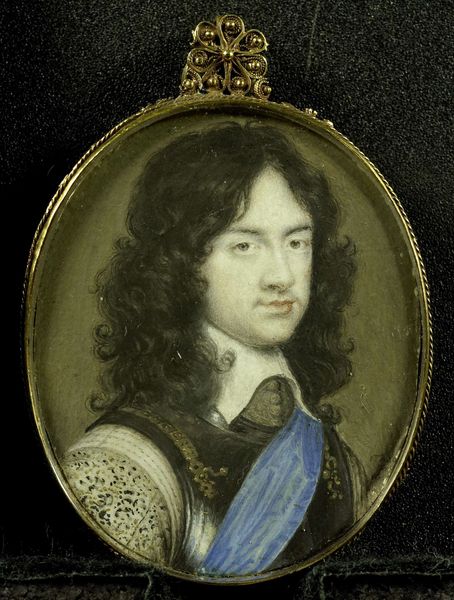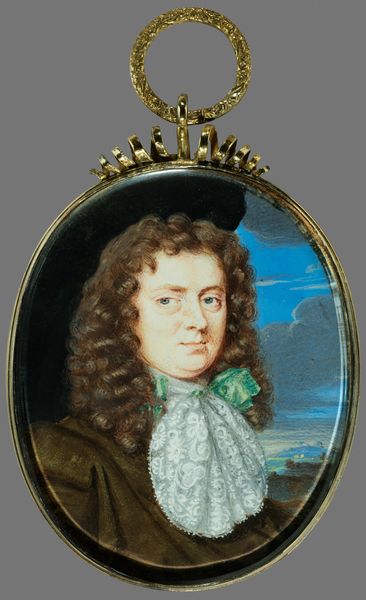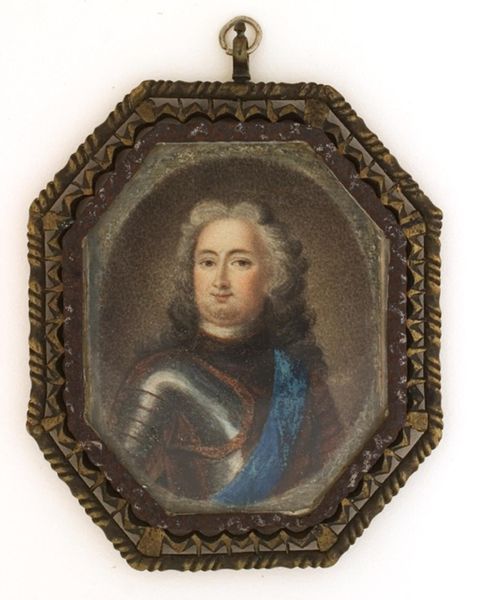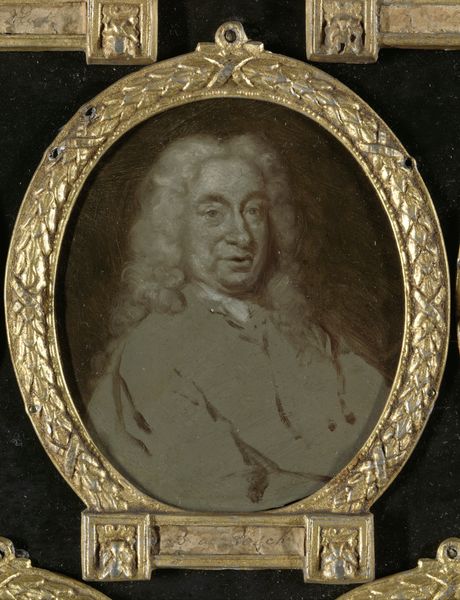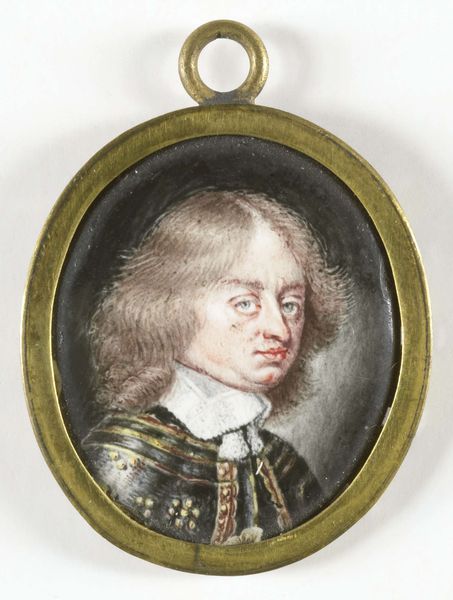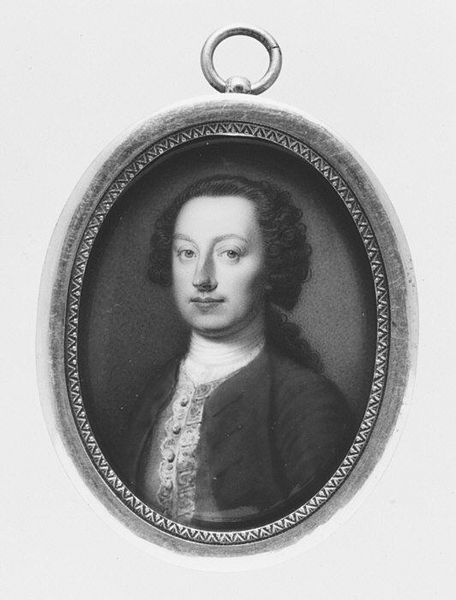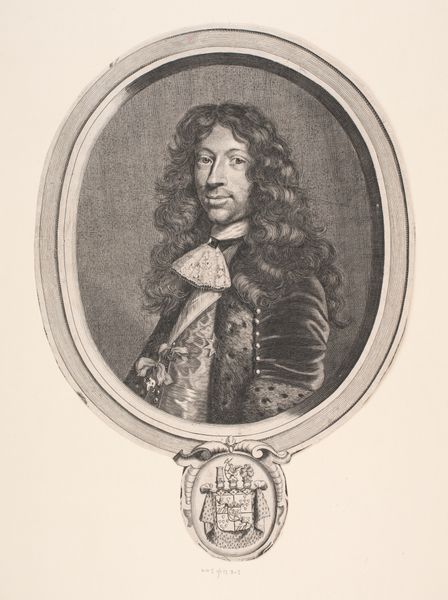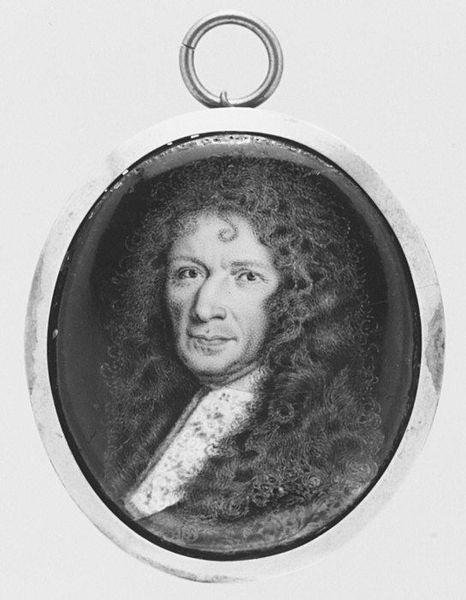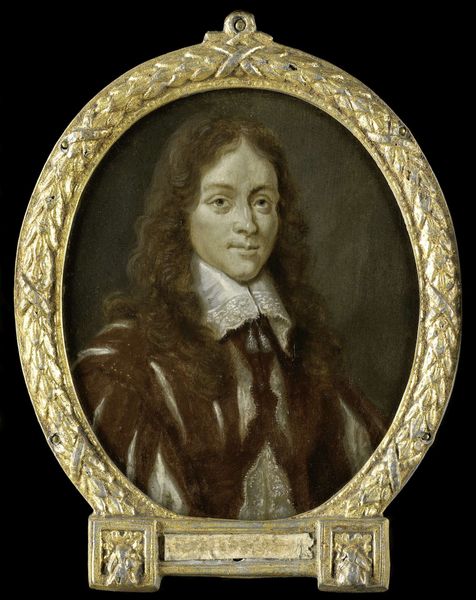
painting, oil-paint
#
portrait
#
baroque
#
painting
#
oil-paint
#
portrait reference
#
portrait head and shoulder
#
framed image
#
facial portrait
#
portrait art
#
miniature
#
fine art portrait
Dimensions: 2.9 cm (height) x 2.7 cm (width) (Netto)
Editor: Here we have Paul Prieur’s "Portrait of a Young Man," dating to 1659. It’s oil on what looks like a very small support. There’s something almost melancholic about his gaze. What can you tell me about it? Curator: Miniatures like this were hugely significant cultural objects. They circulated within specific social circles, often among elites. The sitter's gaze speaks to the importance of visibility and status in 17th century Europe, but consider who saw it. Was it a family member, a potential suitor? These were intimate objects that also played a part in projecting a carefully constructed image. Editor: So, its size is part of its function. How does the Baroque style contribute? Curator: The flowing hair, the soft light, and the very fine brushwork—all hallmarks of the Baroque—suggest an aristocratic bearing. But consider this in contrast to the larger, more bombastic portraits displayed in public galleries today. What does it mean when such an intimate item enters the public domain? Editor: It changes everything! The meaning shifts from personal to... historical record? Curator: Precisely. The museum transforms a personal memento into a public artifact, a signifier of social history and artistic skill. The frame and the loop on top also indicate the function of the painting. A personal pendant, perhaps. The blue background is a very nice touch, too. Editor: That's a point, I never considered the social implications of miniatures! Thanks! Curator: And thank you for noticing it, it's definitely worth further study, considering not just *what* is shown but *how* and to *whom*.
Comments
No comments
Be the first to comment and join the conversation on the ultimate creative platform.
